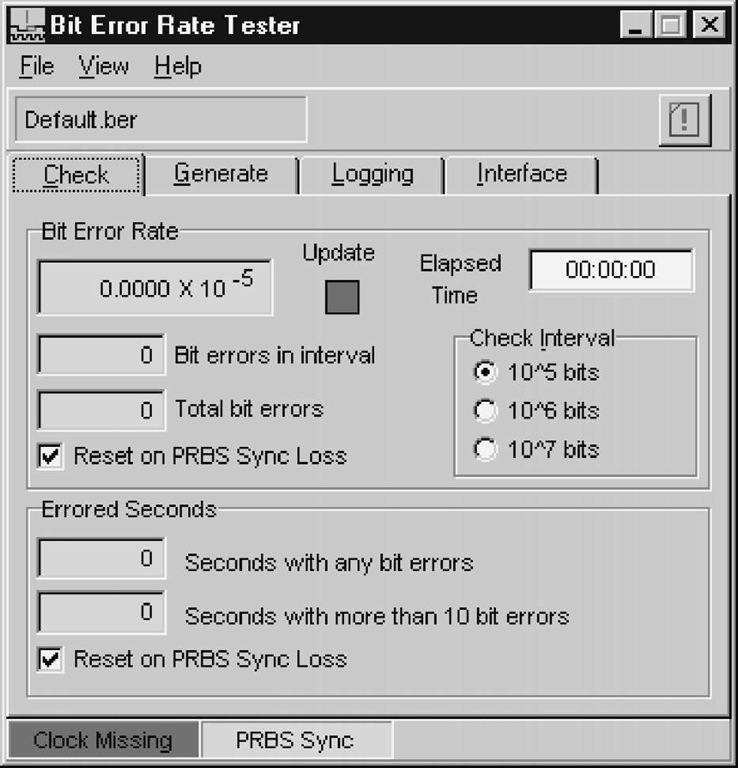Bit error rate testing is used to determine whether data is being passed reliably over a digital communications link. Bit Error Rate Testers (BERTs) send and receive various bit patterns and data characters so what is transmitted and what is received can be compared. Any difference between the two is displayed as an error. The bit error rate is calculated as a ratio: the total number of bit errors divided by the total number of bits received.
Some low-end BERTs may indicate only that an error occurred, not how many errors or what kind. High-end BERTs display a real-time cumulative total of bit errors, as well as a real-time calculation of the bit error rate itself. In addition, high-end BERTs can include information on sync losses, sync loss seconds, errored seconds, error-free seconds, time unavailable, elapsed time, frame errors, and parity errors.
Interfaces
The BERT must be able to physically and electrically accommodate the interfaces on the devices under test. Some BERTs can be configured to accommodate a variety of interfaces through plug-in modules that attach to the base unit. Modules are available for the following common interfaces:
■ Tl/Fractional T1
■ T1/FT1 Data/Voice Frequency Drop and Insert
■ El/Fractional El
■ G.703 64 Kbps Co-Directional
■ G.703 2.048 Mbps (El)
■ G.703 8.448 Mbps (E2)
■ Universal Lab Interface
Test Patterns
Most BERTs offer various bit and byte test patterns, including continuous ls or 0s, alternate ls and 0s, and pseudo-random patterns such as 63, 511, 2047, and 4095. These are typically used for testing synchronous devices. Testing several different types of patterns is useful to determine the degree of performance degradation of digital lines or equipment. For example, when testing a particular device, the 511 pattern may “run clear” and the all ones (111) test may fail.
Some BERTs even allow customization of test patterns, which can extend the range of stress testing. The idea is to “stress” the device under test in a variety of ways in an effort to identify weak components on the network so they can be replaced before causing serious problems.
Testing asynchronous devices, such as asynchronous statistical multiplexers, with random bit patterns is not feasible because of their use of start and stop bits. However, there are BERTs that can send asynchronous byte test patterns.
Some BERTs are also referred to as BLERTs (block error rate testing) because they calculate block error rates in addition to bit error rates. By transmitting in blocks, BLERTs may more accurately represent the flow of user data in a network.
Types of Products
BERTs can be stand-alone devices or portable pocket units. Alternatively, BERT functions can be implemented in software for installation on a laptop computer and accessed through a graphical interface, such as Windows 95 (Figure 11).
The bit error rate is a fundamental performance indicator of a digital line. On many types of networks, errors force the retransmission of affected data, which slows throughput and response time. Being able to measure the bit error rate enables technicians to keep corporate networks running at peak performance.
Figure 11
Reach Technologies offers BERT software that can be accessed through a Windows 95 interface.

